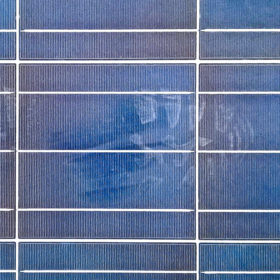Juwi applies new coating to operations and maintenance portfolio
The developer of the material, US-based specialist Pellucere, says its innovation can raise PV energy yield 3.5-4.2%.
Where there’s smoke… there’s reduced PV output
A minor concern it may be, compared to the tragic loss of life, livelihoods and biodiversity caused by the bushfires still ravaging parts of Australia, but reduced output by PV systems due to smoke haze is an unwelcome bi-product of blazes that have burned at a scale and ferocity never seen before.
Promising soiling mitigation solutions should not be left to gather dust
A study has estimated the cost of PV project soiling may increase from €3-5 billion last year to €4-7 billion by 2023 due to more extensive deployment in high insolation and soiling-affected regions, such as China and India. The authors of the paper outlined the potential of soiling mitigation technologies while stressing more R&D is needed to reduce costs and for the adoption of such measures on a larger scale.
Five takeaways from EU PVSEC 2019
This week, pv magazine headed to Marseille for the 36th edition of the EU PVSEC conference and exhibition. During the week-long show, leading universities and research institutes presented their latest results to the industry and public. As the conference heads into its final afternoon, we’ve put together five key takeaways from this year’s event.
EU-funded initiative set to launch new anti-soiling coating
A project backed by the European Union’s Horizon 2020 program says it has developed a self-cleaning coating for modules which is also anti reflective and weather resistant. The project – SolarSharc – expects to launch the product next year.
NREL develops open source tool to monitor PV plant performance & degradation
The U.S. National Renewable Energy Laboratory (NREL) has launched a new software package, developed alongside SunPower and kWh Analytics, which it says will improve the accuracy and reliability of PV plant performance data, and improve the industry’s understanding of degradation.
Q&A: JinkoSolar discusses half cut cells, multi-busbars and bifacial technology
Ahead of its upcoming webinar, on March 27, JinkoSolar’s Head of Technical Service Europe, Andrea Viaro, discusses the company’s new Half Cell (HC) Series, the benefits of multi-busbar and bifacial technology, and upcoming innovations, in a Q&A with pv magazine.
Troubleshooting efforts in PV plants: follow up Q&A from the recent pv magazine webinar
Troubleshooting in solar plants requires not only trying to find a diagnosis of why the performance ratio is reduced, but also to localize faulty modules. In a recent pv magazine webinar, experts discussed four troubleshooting cases and explored whether module-resolved monitoring would help reduce the effort, and thereby decrease LCOE.
What happens when… modules get dirty?
Troubleshooting series: Steadily declining system yield over the years is to be expected due to module degradation in photovoltaic systems. But in the following case, the yield abruptly dropped – and it happened after several years of operation. In this series based on real cases, pv magazine aims to make assessment of troubleshooting efforts more concrete and stimulate a discussion about troubleshooting efficiency today.
Weather and climate data: Answers to questions from the pv magazine webinar
Assessment of weather data and forecasting are vital in reducing risks and, therefore, financing costs and losses during the operation of solar plants. Following a recent pv magazine webinar, Finnish environmental firm Vaisala has prepared detailed answers to the main questions posed by participants.










